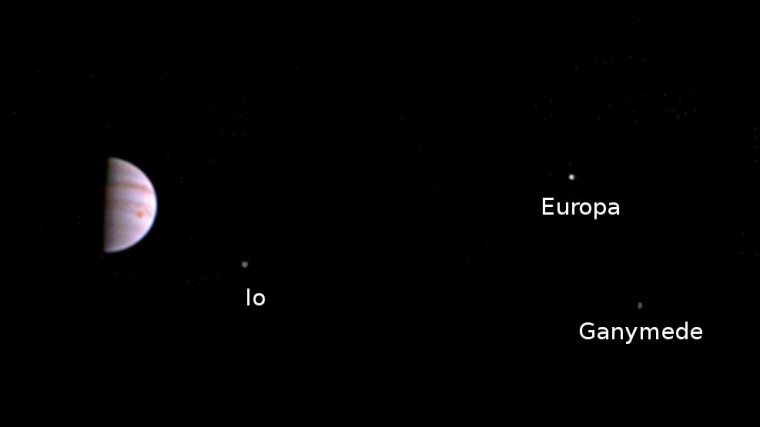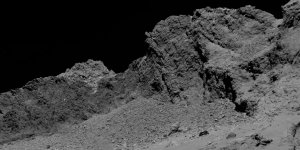| News / Science News |
Juno Spacecraft Sends First In-orbit View
NASA | JULY 16, 2016
The JunoCam camera aboard NASA's Juno mission is operational and sending down data after the spacecraft's July 4 arrival at Jupiter. Juno's visible-light camera was turned on six days after Juno fired its main engine and placed itself into orbit around the largest planetary inhabitant of our solar system. The first high-resolution images of the gas giant Jupiter are still a few weeks away.

This color view from NASA's Juno spacecraft is made from some of the first images taken by JunoCam after the spacecraft entered orbit around Jupiter on July 5th (UTC). ![]()
The new view was obtained on July 10, 2016, at 10:30 a.m. PDT (1:30 p.m. EDT, 5:30 UTC), when the spacecraft was 2.7 million miles (4.3 million kilometers) from Jupiter on the outbound leg of its initial 53.5-day capture orbit.
The color image shows atmospheric features on Jupiter, including the famous Great Red Spot, and three of the massive planet's four largest moons -- Io, Europa and Ganymede, from left to right in the image.
During its mission of exploration, Juno will circle the Jovian world 37 times, soaring low over the planet's cloud tops -- as close as about 2,600 miles (4,100 kilometers). During these flybys, Juno will probe beneath the obscuring cloud cover of Jupiter and study its auroras to learn more about the planet's origins, structure, atmosphere and magnetosphere.
YOU MAY ALSO LIKE





